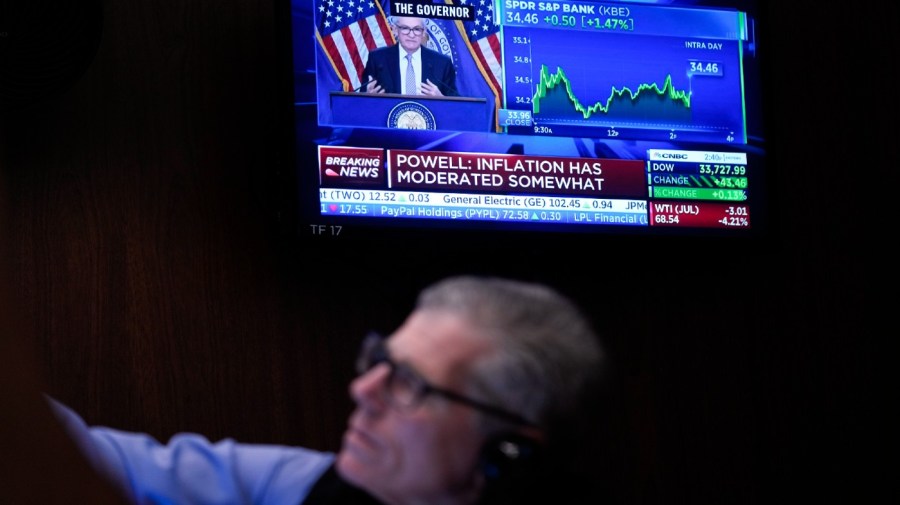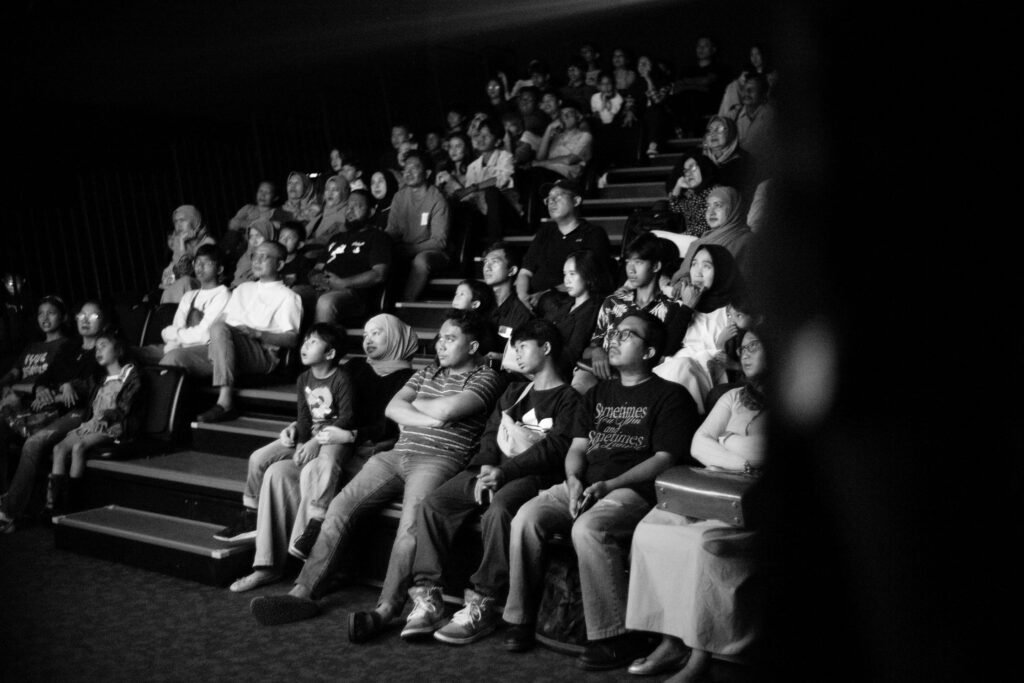Business
Job market slowdown looms over Biden reelection bid on November 3, 2023 at 9:37 pm Business News | The Hill

President Biden and Democrats are in economic purgatory with less than a year until the pivotal 2024 election.
The U.S. economy is slowing down after years of rapid post-pandemic expansion, taking steam out of inflation on the way down. But the slow march toward an even-keeled economy is doing few political favors for Biden and his party.
Biden’s approval ratings have fallen to record lows as Americans feel the pinch of high interest rates and plateauing inflation.
While declines in job gains and wage growth may help the inflation fight, they also leave the administration with dwindling ways to sell Americans on its handling of the economy.
Julia Pollak, chief economist at ZipRecruiter, said the job market slowdown “partly explains why job seekers and new hires are feeling more stressed out than they have in over a year.”
“Rising financial strain, paired with declining worker leverage, are taking their toll. The decline in real disposable income last month suggests that consumer spending could cool further in the coming months, putting yet more downward pressure on the labor market.”
Record job gains but record-low approval
President Biden heads toward Marine One on the South Lawn of the White House in Washington, D.C., on Friday, November 3, 2023. (Greg Nash)
Biden and Democratic lawmakers have struggled to turn record-shattering job growth into positive polling on the economy.
The U.S. has added roughly 14 million jobs since Biden took office in January 2021 — far more than any of his predecessors. Millions of those jobs were simply products of a recovery already in motion before Biden’s election, but the president has still made the speed of the comeback a centerpiece of his reelection campaign.
“Today’s report shows that Bidenomics is growing the economy from the middle out and bottom up—not the top down,” the White House said in a Friday statement.
Biden and Democrats are eager to claim credit for the resilience of the U.S. labor market, which many economists predicted would be losing jobs by now.
With 150,000 jobs added last month and a jobless rate of 3.9 percent, experts say the U.S. is still adding far more than enough jobs to keep the economy out of recession.
“The economy needs to add only 75,000 jobs a month—compared with 200,000 a decade ago—to stabilize employment given demographic changes,” wrote Joseph Brusuelas, chief U.S. economist at audit and tax firm RSM, in a Friday analysis.
He added that the October jobs figures are “consistent with full employment” and “to be celebrated,” particularly after years of high inflation.
Biden’s support, however, has not been as sturdy.
Just 37 percent of Americans approve of Biden’s job as president, according to a Gallup poll released last week, in line with the lowest mark of his presidency. Biden’s support among Democrats also plunged 11 percentage points to a new record low of 75 percent.
The president’s approval among independents fell 4 percentage points to 35 percent, and just 5 percent of Republicans approve of Biden.
Recent polls of Biden’s handling of the economy and consumer sentiment have also fallen sharply, largely in step with an increase in interest rates and credit card balances.
Inflation, rate hikes remain supreme
A line of 2022 Santa Fe SUV’s sit outside a Hyundai dealership Sunday, Sept. 12, 2021, in Littleton, Colo. (AP Photo/David Zalubowski, File)
Biden and top Democrats have largely blamed the media and Republicans for driving Americans’ dismal views on the economy.
In a remarks last month after a stunning September jobs gain, Biden ribbed reporters — ”not the happiest people in the world,” he said — for hyperfixating on inflation and recession fears.
“I think the people … who got jobs feel better about the economy,” Biden said in October.
Millions of Americans who lost jobs during the recession gained them back under Biden, and far faster than many economists expected. Intense demand for workers also helped tens of millions of Americans secure higher wages and new jobs with better pay, flexibility and career opportunities.
Callie Cox, U.S. investment analyst at eToro, also cited the record number of strike as a sign of “the power that employees have at this moment.”
After striking since Sept. 14, the United Autoworkers (UAW) union reached tenative deals this week with Ford, General Motors (GM) and Stellantis on new contracts that would boost worker pay by 25 percent.
The UAW also won back key concessions, including cost-of-living adjustments and more rapid progressions to top wage rates, given up after the Great Recession.
“We’re in the middle of an empowering movement in the job market that’s been a long time coming, and it’s just another reminder of how solid the economy is (even though it may not show through in economic data),” Cox wrote.
But while the job market is slowing toward its pre-pandemic strength, Americans are still grapping with both inflation and interest rates at their highest levels in decades.
Annual inflation peaked at 9.1 percent in June 2022, according to the consumer price index (CPI), before landing at 3.7 percent in September.
The slowdown in the job market may also be falling hardest on Americans least able to handle a setback, according to Nick Bunker, economic research chief at Indeed.
“The rise in unemployment is concentrated among workers who recently lost their jobs and the job finding rate of unemployed workers ticked down,” Bunker explained.
“Perhaps this rise is just a sign that the extraordinarily tight labor market of recent years is loosening. But continued upward momentum would be troubling.”
‘The Fed holds the keys’
Federal Reserve Chair Jerome H. Powell speaks during a news conference at the Federal Reserve in Washington, Wednesday, Nov. 1, 2023. (AP Photo/Susan Walsh)
Surging inflation pushed the Federal Reserve into the fastest interest-rate tightening cycle in its history, boosting borrowing costs to the highest level since the 2007-08 recession.
The Fed held off on boosting interest rates Wednesday for the second consecutive meeting, citing the toll of higher rates on businesses and consumers. Experts doubt the bank will raise borrowing costs again after the soft October jobs report.
“The good news is that this slowdown is not due to economic fundamentals, but rather due to careful orchestration by the Fed. If it turns out that the Fed and bond markets have gone too far, the Fed holds the keys to turning that around,” Pollak said.
Pollak said businesses “have many vacancies, they want to hire, and they want to expand. But high interest rates are holding them back. If rates start coming down next year, expect that pent-up demand for labor, transportation, building materials and a host of other inputs to be unleashed again.”
Business, Economy President Biden and Democrats are in economic purgatory with less than a year until the pivotal 2024 election. The U.S. economy is slowing down after years of rapid post-pandemic expansion, taking steam out of inflation on the way down. But the slow march toward an even-keeled economy is doing few political favors for Biden and…
Business
Harvard Grads Jobless? How AI & Ghost Jobs Broke Hiring

America’s job market is facing an unprecedented crisis—and nowhere is this more painfully obvious than at Harvard, the world’s gold standard for elite education. A stunning 25% of Harvard’s MBA class of 2025 remains unemployed months after graduation, the highest rate recorded in university history. The Ivy League dream has become a harsh wakeup call, and it’s sending shockwaves across the professional landscape.

Jobless at the Top: Why Graduates Can’t Find Work
For decades, a Harvard diploma was considered a golden ticket. Now, graduates send out hundreds of résumés, often from their parents’ homes, only to get ghosted or auto-rejected by machines. Only 30% of all 2025 graduates nationally have found full-time work in their field, and nearly half feel unprepared for the workforce. “Go to college, get a good job“—that promise is slipping away, even for the smartest and most driven.
Tech’s Iron Grip: ATS and AI Gatekeepers
Applicant tracking systems (ATS) and AI algorithms have become ruthless gatekeepers. If a résumé doesn’t perfectly match the keywords or formatting demanded by the bots, it never reaches human eyes. The age of human connection is gone—now, you’re just a data point to be sorted and discarded.
AI screening has gone beyond basic qualifications. New tools “read” for inferred personality and tone, rejecting candidates for reasons they never see. Worse, up to half of online job listings may be fake—created simply to collect résumés, pad company metrics, or fulfill compliance without ever intending to fill the role.
The Experience Trap: Entry-Level Jobs Require Years
It’s not just Harvard grads who are hurting. Entry-level roles demand years of experience, unpaid internships, and portfolios that resemble a seasoned professional, not a fresh graduate. A bachelor’s degree, once the key to entry, is now just the price of admission. Overqualified candidates compete for underpaid jobs, often just to survive.
One Harvard MBA described applying to 1,000 jobs with no results. Companies, inundated by applications, are now so selective that only those who precisely “game the system” have a shot. This has fundamentally flipped the hiring pyramid: enormous demand for experience, shrinking chances for new entrants, and a brutal gauntlet for anyone not perfectly groomed by internships and coaching.
Burnout Before Day One
The cost is more than financial—mental health and optimism are collapsing among the newest generation of workers. Many come out of elite programs and immediately end up in jobs that don’t require degrees, or take positions far below their qualifications just to pay the bills. There’s a sense of burnout before careers even begin, trapping talent in a cycle of exhaustion, frustration, and disillusionment.
Cultural Collapse: From Relationships to Algorithms
What’s really broken? The culture of hiring itself. Companies have traded trust, mentorship, and relationships for metrics, optimizations, and cost-cutting. Managers no longer hire on potential—they rely on machines, rankings, and personality tests that filter out individuality and reward those who play the algorithmic game best.
AI has automated the very entry-level work that used to build careers—research, drafting, and analysis—and erased the first rung of the professional ladder for thousands of new graduates. The result is a workforce filled with people who know how to pass tests, not necessarily solve problems or drive innovation.
The Ghost Job Phenomenon
Up to half of all listings for entry-level jobs may be “ghost jobs”—positions posted online for optics, compliance, or future needs, but never intended for real hiring. This means millions of job seekers spend hours on applications destined for digital purgatory, further fueling exhaustion and cynicism.
Not Lazy—Just Locked Out
Despite the headlines, the new class of unemployed graduates is not lazy or entitled—they are overqualified, underleveraged, and battered by a broken process. Harvard’s brand means less to AI and ATS systems than the right keyword or résumé format. Human judgment has been sidelined; individuality is filtered out.

What’s Next? Back to Human Connection
Unless companies rediscover the value of human potential, mentorship, and relationships, the job search will remain a brutal numbers game—one that even the “best and brightest” struggle to win. The current system doesn’t just hurt workers—it holds companies back from hiring bold, creative talent who don’t fit perfect digital boxes.
Key Facts:
- 25% of Harvard MBAs unemployed, highest on record
- Only 30% of 2025 grads nationwide have jobs in their field
- Nearly half of grads feel unprepared for real work
- Up to 50% of entry-level listings are “ghost jobs”
- AI and ATS have replaced human judgment at most companies
If you’ve felt this struggle—or see it happening around you—share your story in the comments. And make sure to subscribe for more deep dives on the reality of today’s economy and job market.
This is not just a Harvard problem. It’s a sign that America’s job engine is running on empty, and it’s time to reboot—before another generation is locked out.
Business
Why 9 Million Americans Have Left

The Growing American Exodus
Nearly 9 million Americans now live outside the United States—a number that rivals the population of several states and signals a profound shift in how people view the American dream. This mass migration isn’t confined to retirees or the wealthy. Thanks to remote work, digital nomad visas, and mounting pressures at home, young professionals, families, and business owners are increasingly joining the ranks of expats.

Rising Costs and Shrinking Wallets
Living in the US has become increasingly expensive. Weekly grocery bills topping $300 are not uncommon, and everyday items like coffee and beef have surged in price over the last year. Rent, utilities, and other essentials also continue to climb, leaving many Americans to cut meals or put off purchases just to make ends meet. In contrast, life in countries like Mexico or Costa Rica often costs just 50–60% of what it does in the US—without sacrificing comfort or quality.
Health Care Concerns Drive Migration
America’s health care system is a major trigger for relocation. Despite the fact that the US spends more per person on health care than any other country, millions struggle to access affordable treatment. Over half of Americans admit to delaying medical care due to cost, with households earning below $40,000 seeing this rate jump to 63%. Many expats point to countries such as Spain or Thailand, where health care is both affordable and accessible, as a major draw.

Seeking Safety Abroad
Public safety issues—especially violent crime and gun-related incidents—have made many Americans feel unsafe, even in their own communities. The 2024 Global Peace Index documents a decline in North America’s safety ratings, while families in major cities often prioritize teaching their children to avoid gun violence over simple street safety. In many overseas destinations, newly arrived American families report a significant improvement in their sense of security and peace of mind.
Tax Burdens and Bureaucracy
US tax laws extend abroad, requiring expats to file annual returns and comply with complicated rules through acts such as FATCA. For some, the burden of global tax compliance is so great that thousands relinquish their US citizenship each year simply to escape the paperwork and scrutiny.
The Digital Nomad Revolution
Remote work has unlocked new pathways for Americans. Over a quarter of all paid workdays in the US are now fully remote, and more than 40 countries offer digital nomad visas for foreign professionals. Many Americans are leveraging this opportunity to maintain their US incomes while cutting costs and upgrading their quality of life abroad.

Conclusion: Redefining the Dream
The mass departure of nearly 9 million Americans reveals deep cracks in what was once considered the land of opportunity. Escalating costs, inaccessible healthcare, safety concerns, and relentless bureaucracy have spurred a global search for better options. For millions, the modern American dream is no longer tied to a white-picket fence, but found in newfound freedom beyond America’s borders.
Business
Will Theaters Crush Streaming in Hollywood’s Next Act?

Hollywood is bracing for a pivotal comeback, and for movie lovers, it’s the kind of shake-up that could redefine the very culture of cinema. With the freshly merged Paramount-Skydance shaking up its strategy, CEO David Ellison’s announcement doesn’t just signal a change—it reignites the passion for moviegoing that built the magic of Hollywood in the first place.

Theatrical Experience Roars Back
Fans and insiders alike have felt the itch for more event movies. For years, streaming promised endless options, but fragmented attention left many longing for communal spectacle. Now, with Paramount-Skydance tripling its film output for the big screen, it’s clear: studio leaders believe there’s no substitute for the lights, the hush before the opening credits, and the collective thrill of reacting to Hollywood’s latest blockbusters. Ellison’s pivot away from streaming exclusives taps deep into what unites cinephiles—the lived experience of cinema as art and event, not just content.
Industry Pulse: From Crisis to Renaissance
On the financial front, the numbers are as electrifying as any plot twist. After years of doubt, the box office is roaring. AMC, the world’s largest theater chain, reports a staggering 26% spike in moviegoer attendance and 36% revenue growth in Q2 2025. That kind of momentum hasn’t been seen since the heyday of summer tentpoles—and it’s not just about more tickets sold. AMC’s strategy—premium screens, with IMAX and Dolby Cinema, curated concessions, and branded collectibles—has turned every new release into an event, driving per-customer profits up nearly 50% compared to pre-pandemic norms.
Blockbusters Lead the Culture
Forget the gloom of endless streaming drops; when films like Top Gun: Maverick, Mission: Impossible, Minecraft, and surprise hits like Weapons and Freakier Friday draw crowds, the industry—and movie fans—sit up and take notice. Movie-themed collectibles and concession innovations, from Barbie’s iconic pink car popcorn holders to anniversary tie-ins, have made each screening a moment worth remembering, blending nostalgia and discovery. The focus: high-impact, shared audience experiences that streaming can’t replicate.
Streaming’s Limits and Studio Strategy
Yes, streaming is still surging, but the tide may be turning. The biggest franchises, and the biggest cultural events, happen when audiences come together for a theatrical release. Paramount-Skydance’s shift signals to rivals that premium storytelling and box office spectacle are again at the center of Hollywood value creation. The result is not just higher profits for exhibitors like AMC, but a rebirth of movie-going as the ultimate destination for fans hungry for connection and cinematic adventure.

Future Forecast: Culture, Community, and Blockbuster Dreams
As PwC and others warn that box office totals may take years to fully catch up, movie lovers and industry leaders alike are betting that exclusive theatrical runs, enhanced viewing experiences, and fan-driven engagement are the ingredients for long-term recovery—and a new golden age. The Paramount-Skydance play is more than a business move; it’s a rallying cry for the art of the theatrical event. Expect more big bets, more surprises, and—finally—a long-overdue renaissance for the silver screen.
For those who believe in the power of cinema, it’s a thrilling second act—and the best seat in the house might be front and center once again.

 Entertainment4 days ago
Entertainment4 days agoWicked Sequel Disappoints Fans: Audience Verdict on For Good

 Entertainment3 weeks ago
Entertainment3 weeks agoAfter Party: Festival Winner for Best Romantic Short

 News3 weeks ago
News3 weeks agoCamp Wackapoo – Rise of Glog Takes Center Stage

 Entertainment3 weeks ago
Entertainment3 weeks agoFrancisco Ramos Takes Top Mockumentary Award at Houston Comedy Film Festival

 News2 weeks ago
News2 weeks agoYolanda Adams Questions Traditional Views on God’s Gender, Audience Reacts

 Politics3 weeks ago
Politics3 weeks agoTrump’s $2,000 Tariff Dividend Plan: Who Gets Paid?

 Politics4 weeks ago
Politics4 weeks agoMamdani’s Victory Triggers Nationwide Concern Over New York’s Future

 Film Production3 weeks ago
Film Production3 weeks agoWhy China’s 2-Minute Micro Dramas Are Poised To Take Over The U.S.




























